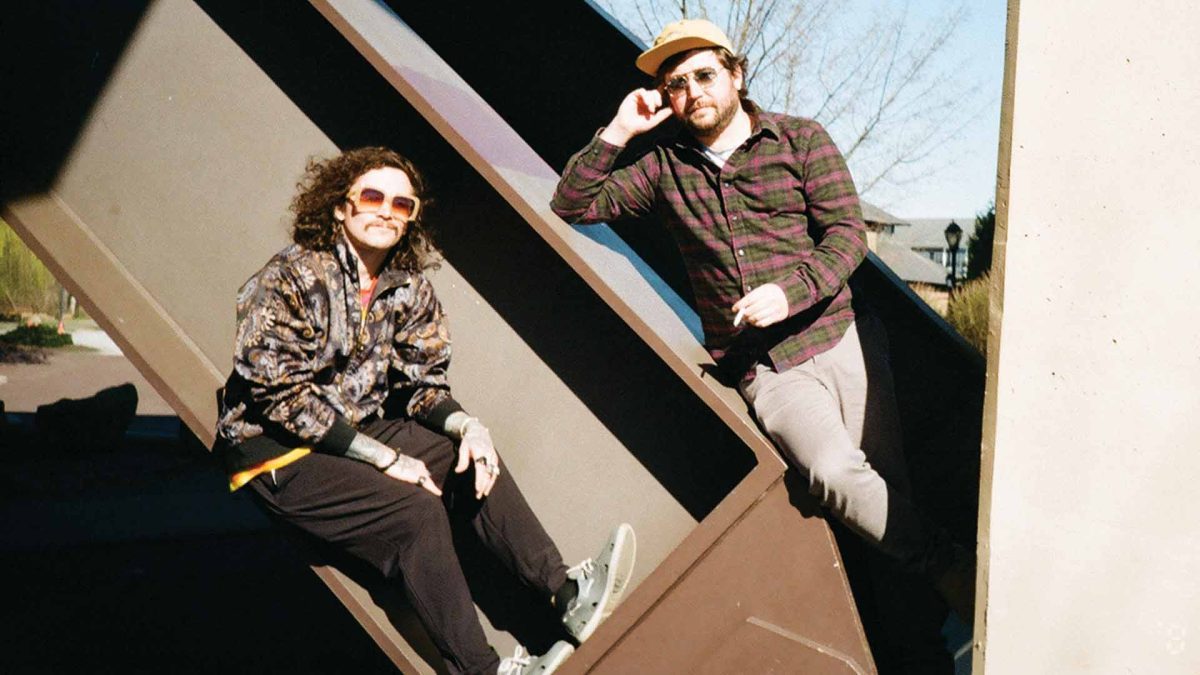by Erinn Fortson
For over a decade, Stéphane Paut has maintained a relationship with metal. Although he might have appeared to be monogamous, Paut has never been married to the genre. He spent a good chunk of the last 14 years thinking about other types of music. Better known as Neige, the French artist has been planning a breakaway from Alcest’s roots for sometime. The band’s fourth studio album is the unveiling of that different sound.
Making Shelter was about discontinuing norms and routine. From the location of the recording studio to the production team, everything about this record is different on purpose. There’s still a hint of metal throughout the album, but it doesn’t sit at the helm.
“It’s not a decision we [recently] took into the studio. It’s something that was put into my head [a long time ago],” Neige says about the group’s switch. “I have been doing metal inspired music for almost 15 years now. I want to try new things and I’m kind of fed up with this genre. I just want to give a different shape to Alcest and it’s the kind of project that will grow with me, all my life. It started with metal related [music], but it doesn’t mean it can’t change completely.”
This way of thinking allowed Alcest its continued growth. And not giving in to the pressures of conventional metal is the whole reason behind Shelter. The band also stepped outside the box when developing the new record’s theme. The title comes from the idea of security in something that creates a feeling of comfort. For Neige, that something is the sea and the solace it has brought him since he was a child sailing with his parents in the south of France.
As Neige explains, though, the concept of the word “shelter” isn’t one-dimensional. It can take on so many different forms and meanings; kind of the way music is understood and interpreted.
Shelter was created at Sundlaugin, the famous swimming pool studio in Iceland. Before the fourth album, there was never really a big emphasis on location and the role it played in the recording process. Neige and band mate Winterhalter went in the booth with a new attitude this time. Where the music was made had more significance for Alcest’s latest project. It contributed to the inspiration that created Shelter, proving to be one of the most important factors in this whole process.
“My drummer and I [decided] it [was] the time for big changes,” says Neige. “So, we thought, what studio [could help us reach] this organic texture and sound? Then we thought about Sundlaugin in Iceland.”
This is the same recording studio that Sigur Rós calls home. Owned by the band, the unique space has been once that’s provided Sigur Rós with a nurturing platform. Alcest hoped that Sundlaugin would offer that same type of environment and influence during the making of Shelter.
Besides sharing their studio, Alcest also borrowed Sigur Rós producer, Birgir Jón Birgisson, for their recent album. Adding this new member to the creative team was icing on the cake; Birgisson did for Alcest what he did for Sigur Rós, helping the band find fresh voices.
It was the opposite for Neige when he started Alcest as a teen. In the band’s beginning stages, Neige was attracted to powerful and almost violent music. It eventually led him to metal.
“I was a teenager and I had this typical teenage angst,” says Neige. “And I just loved metal. But I evolved very quickly and [starting listening to] new wave, shoegazing, and post-rock and ambient; all kinds of music. So, this exclusive love for metal didn’t last more that one year maybe, or two years.
“It’s a bit sad because I have a huge respect for metal and for the metal heads, but the big problem of this scene is when you start as a metal guy, it’s impossible to move away from that. I don’t understand,” continues Neige. “It’s like metal [defines you as a person]. [Just] because you listen to metal once in your life, [doesn’t mean] you’re going stay this metal head forever. For me this is just a music genre, just like any other genre.”
It has never been the intention to completely discard the band’s metal influence; more like the inclusion of other types of music into Alcest’s sound. So, when it came time to revamp Alcest, Neige was ready. He describes it as sort of a natural process, which caused the work to quickly follow suit.
“All the songs were composed in a very short time because I needed this change; it was something that was necessary,” explains Neige. “So, I just waited for the right moment. And maybe this is something I could have done before, but [it was good to do it now]. [The music] went out so quickly and I’m so glad we [made] this change.”
Neige says the biggest challenge in making Shelter was to still keep the Alcest core. “This music has a strong personality and the melodies are very epic; sometimes there are some Celtic influences. It’s very special. It’s not your typical indie [album that’s only full of noises]. It’s much more than that.”







